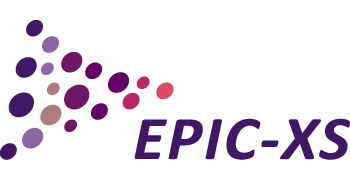This is one of four joint research activities (JRA’s) lead by Lennart Martens from the Vlaams Instituut voor Biotechnologie (VIB) and involves research partners Utrecht University (The Netherlands), The European Molecular Biology Laboratory (UK), Eberhard Karls Uniiversitaet Tuebingen (Germany) and the Technische Uniiversitaet Muenchen (Germany) as well as the Vlaams Instituut voor Biotechnologie. The EPIC-XS partners will develop algorithms, software, standards, and data handling and sharing solutions for the novel technologies and approaches being developed in the other three JRA’s and implemented in the access sites. This research is closely linked to the work package (WP) dealing with data management.

Computational Proteomics & Cross-Omics Integration
This cutting-edge bioinformatics support is crucial, as proteomics, like all modern Omics technologies, relies very strongly on tailored and performant bioinformatics solutions to manage, process, and make sense of its acquired data.
For JRA2 (Future & Emerging Proteomics Technologies) the team will work on improved data analysis performance and reliability to support robust single-cell proteomics, and on novel algorithms for the accurate characterization of non-tryptic peptides.
For JRA3 (Translationsl Proteomics) the project will focus on automated quality control for clinical samples, on the sensitive yet specific identification of (unexpected) post-translational modifications (including phosphorylation), and on the handling and interpretation of results from large-scale translational experiments.
For JRA4 (Proteome Organization; Structural & Spatial Proeomics) work will involve new ways to identify cross-linked peptides, on new algorithms and tools for top-down proteomics, and on the integration of spatial and organizational proteomics information in query-able knowledge bases. Throughout, a key component of this JRA1 project concerns the implementation of these novel bioinformatics developments at the various access-sites, thus allowing the newly developed technologies to be brought to the users efficiently and robustly.

The software developed will be part of robust, scalable, user-friendly, integrated, and quality-controlled data analysis pipelines, so that data analysis becomes fully reproducible and traceable. With this aim in mind, we will ensure that the software can be deployed in different software environments, including cloud computing infrastructures.

